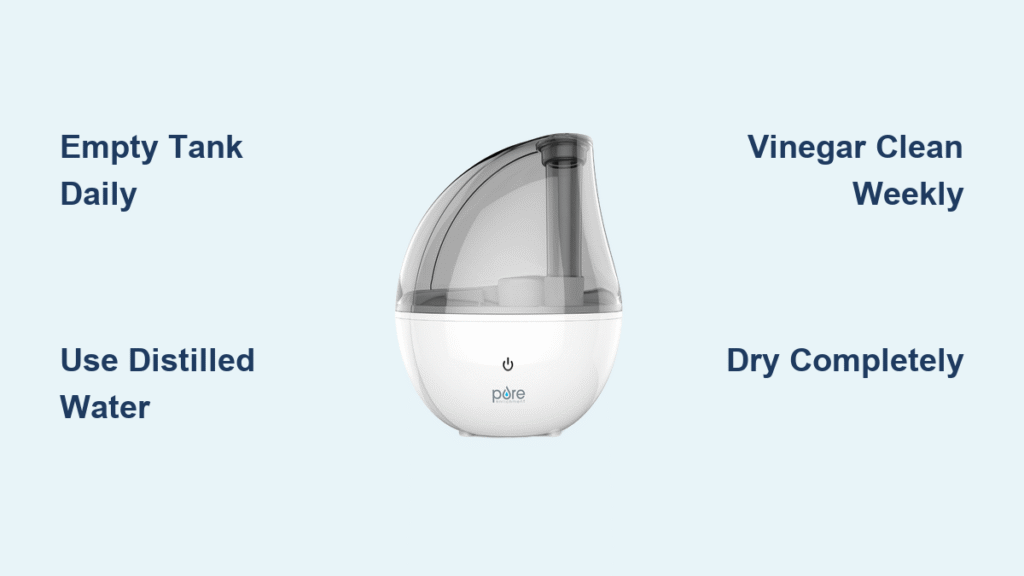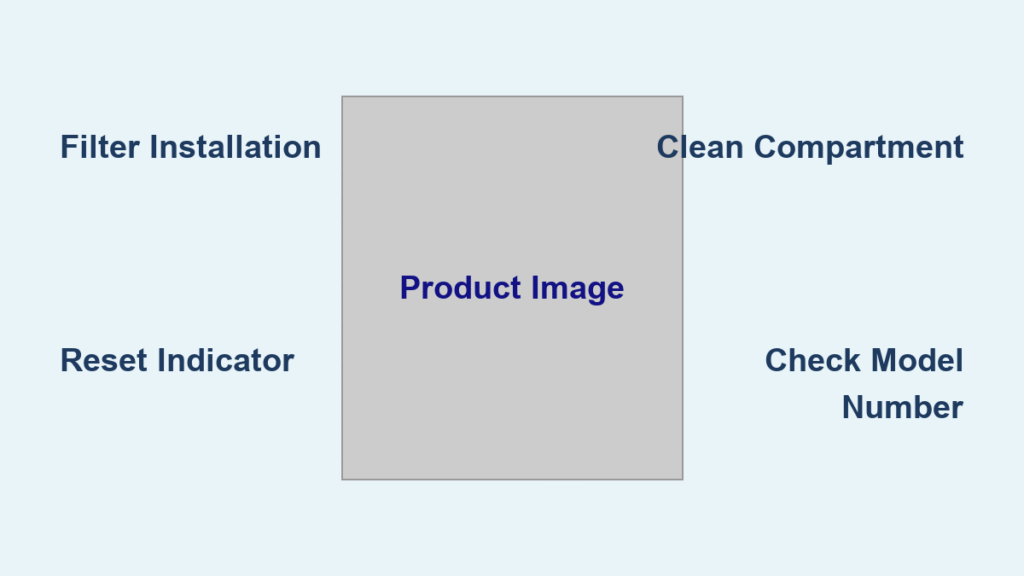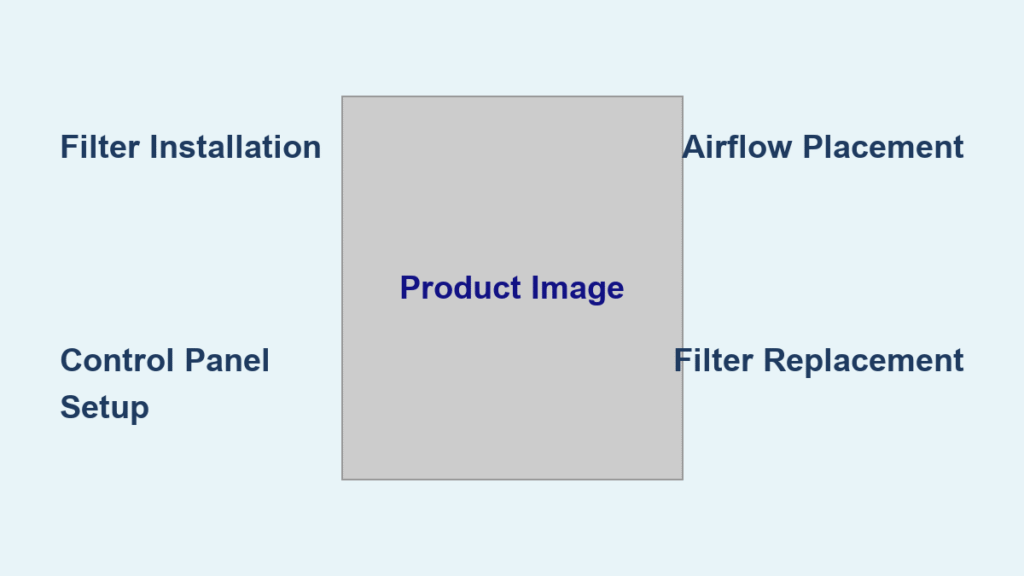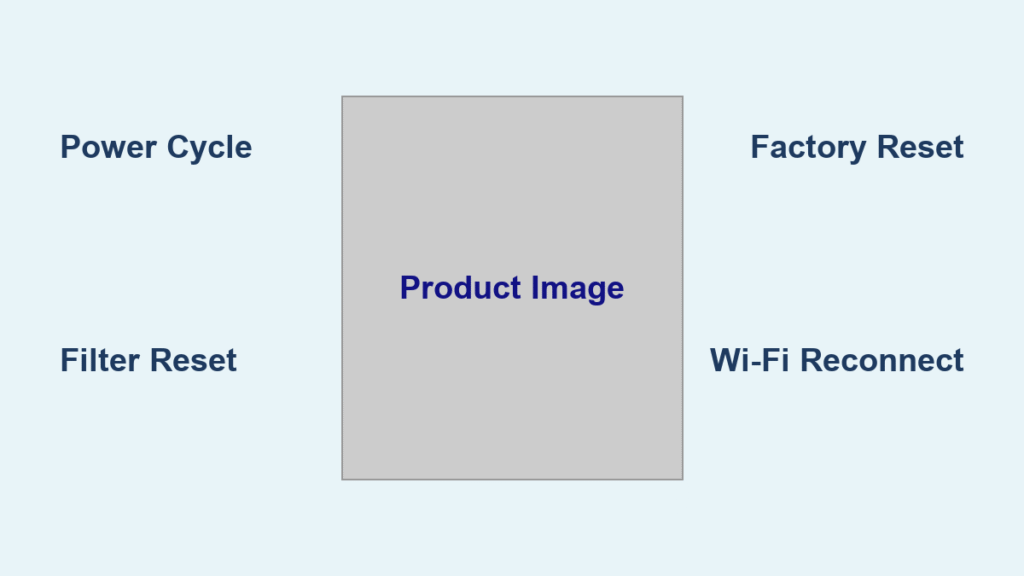That chalky white ring forming around your pore humidifier’s tank isn’t just unsightly—it’s a bacterial breeding ground pumping contaminated mist directly into your breathing space. Every hour you delay cleaning, mineral deposits harden while mold colonies multiply, transforming your comfort device into a health hazard. The solution? A scientifically proven 20-minute cleaning process using household supplies you already own. This guide delivers the exact EPA-aligned protocol to restore your pore humidifier to safe, efficient operation—no guesswork required.
Ignoring proper maintenance turns your pore humidifier into a respiratory risk, especially for allergy sufferers. But with this step-by-step method, you’ll eliminate 99% of contaminants while extending your unit’s lifespan. You’ll discover why distilled water is non-negotiable, how to safely disinfect without toxic fumes, and the critical drying step most users skip. Let’s transform your humidifier from a health threat to a clean moisture source.
Your Pore Humidifier Cleaning Kit: Must-Have Supplies
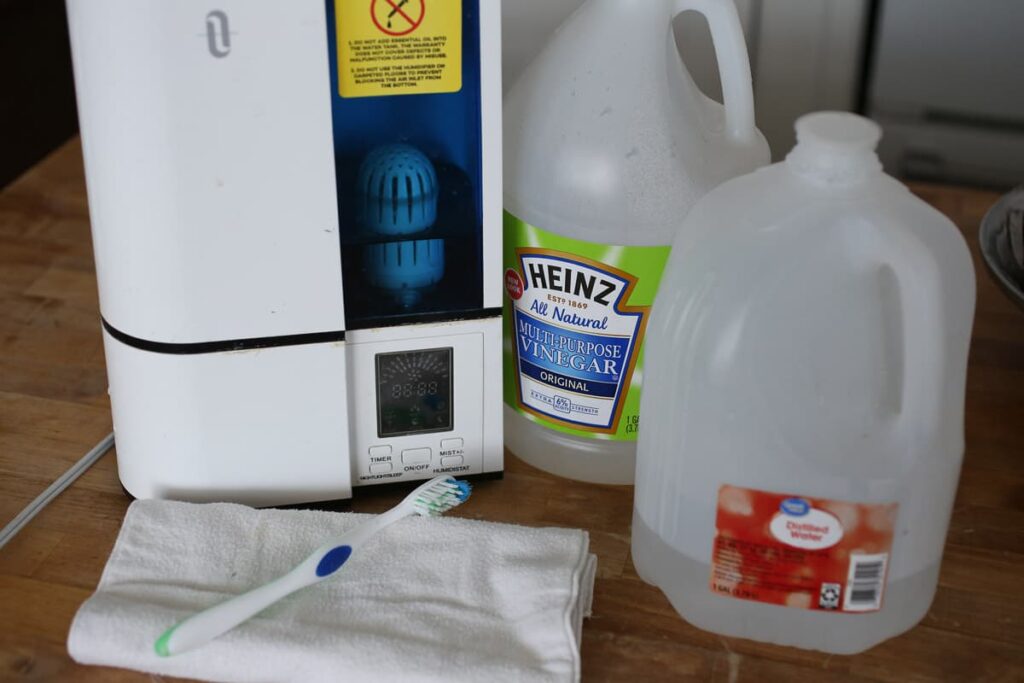
Gather these specific items before starting—substitutions compromise effectiveness. Never skip the soft-bristled brush as harsh tools scratch plastic surfaces where bacteria hide.
Core Cleaning Arsenal:
– Distilled white vinegar (breaks mineral bonds without residue)
– 3% hydrogen peroxide (safer disinfection alternative to bleach)
– Liquid chlorine bleach (only if peroxide unavailable – never mix with vinegar)
– Soft toothbrush or nylon dish brush (for crevice cleaning)
– Microfiber cloths (lint-free drying)
– Distilled water (essential for operation and rinsing)
Preventive Boosters (Optional but Recommended):
– Protec Humidifier Tank Cleaner (inhibits biofilm between cleans)
– Essick Air bacteriostatic treatment (for evaporative models only)
Critical Safety Note
Never combine vinegar and bleach—this creates toxic chlorine gas. Choose one disinfectant method per session. Hydrogen peroxide is safest for indoor use while equally effective against mold and bacteria.
Stop Daily Mineral Buildup: Pore Humidifier Water Rules
Empty Tank Within 30 Minutes of Shutdown
Stagnant water breeds biofilm in under 48 hours—even “empty” tanks retain residual droplets. After each use:
1. Unplug unit immediately
2. Invert tank and shake vigorously over sink
3. Wipe interior with dry microfiber cloth
4. Leave disassembled for 1 hour to air-dry
Why this matters: Tap water minerals crystallize rapidly, creating bacterial hideouts. Daily emptying prevents 90% of deep-cleaning emergencies.
Switch to Distilled Water Immediately
Tap water contains calcium, magnesium, and microbes that accelerate limescale. Distilled water reduces mineral deposits by 80%—a non-negotiable step for pore humidifier longevity. If you see white dust around the unit, your water quality is failing.
Complete Component Drying Protocol
Damp = dangerous. After emptying:
– Remove all removable parts
– Place on clean towel in direct sunlight
– Ensure airflow around base unit
– Verify zero moisture in reservoir corners before reassembly
Pro tip: Run the humidifier without water for 10 minutes weekly to evaporate hidden moisture in hard-to-reach areas.
15-Minute Weekly Clean: Remove Limescale From Pore Humidifier
Disassembly Checklist (3 Minutes)
- Unplug completely (safety first)
- Separate all components per manual—never force parts
- Keep base unit dry—only clean removable plastic parts
- Rinse visible debris under cool water
Visual cue: Look for chalky white deposits on tank walls and float sensors—this is mineral buildup requiring immediate action.
Vinegar Limescale Removal Process (7 Minutes)
- Mix 2 tbsp white vinegar per ½ gallon water
- Submerge affected parts for 10 minutes
- Scrub buildup with soft brush using circular motions
- Focus on crevices where sensors and valves hide
- For stubborn spots: Apply undiluted vinegar with cloth for 20 minutes
Critical step: Never soak electronic bases—mineral deposits here cause permanent damage. Target only plastic components.
Triple Rinse Verification (5 Minutes)
- Rinse all parts under cool water for 60 seconds
- Fill tank with distilled water, swish vigorously
- Drain and repeat until no vinegar scent remains
- Wipe exterior with damp microfiber cloth
- Air-dry completely before reassembly
Warning: Residual vinegar creates toxic ozone when mixed with mist. Rinse until scent disappears—this is non-negotiable.
Monthly Deep Clean: Disinfect Your Pore Humidifier in 20 Minutes

When Deep Cleaning Becomes Emergency-Critical
Act immediately if you notice:
– Musty odors from mist output
– Slimy film on reservoir surfaces
– Brown stains that won’t rinse away
– Reduced mist output indicating blockage
Schedule monthly deep cleans even without symptoms—hidden mold thrives in dark, damp environments.
Hydrogen Peroxide Disinfection Method (Safest Option)
- Fill tank ¾ full with 3% hydrogen peroxide
- Place on base unit to saturate reservoir
- Let stand 15 minutes (set timer—over-soaking damages seals)
- Empty solution outdoors (not down drains)
- Rinse 5x with distilled water until scent vanishes
- Air-dry 2 hours before reuse
Why peroxide wins: Kills 99.9% of mold/bacteria without toxic fumes. Bleach requires outdoor handling due to fumes—peroxide works safely indoors.
Bleach Method (Last Resort Protocol)
Only use if peroxide unavailable:
– Mix 1 tsp bleach per gallon water (CDC standard)
– Follow identical steps as peroxide method
– Mandatory outdoor processing—bleach fumes are hazardous
– Double rinse cycle required to eliminate residue
Life-saving rule: Never store bleach solution—mix fresh each time. Old solutions lose effectiveness and corrode plastic.
Adjust Cleaning for Your Pore Humidifier Type
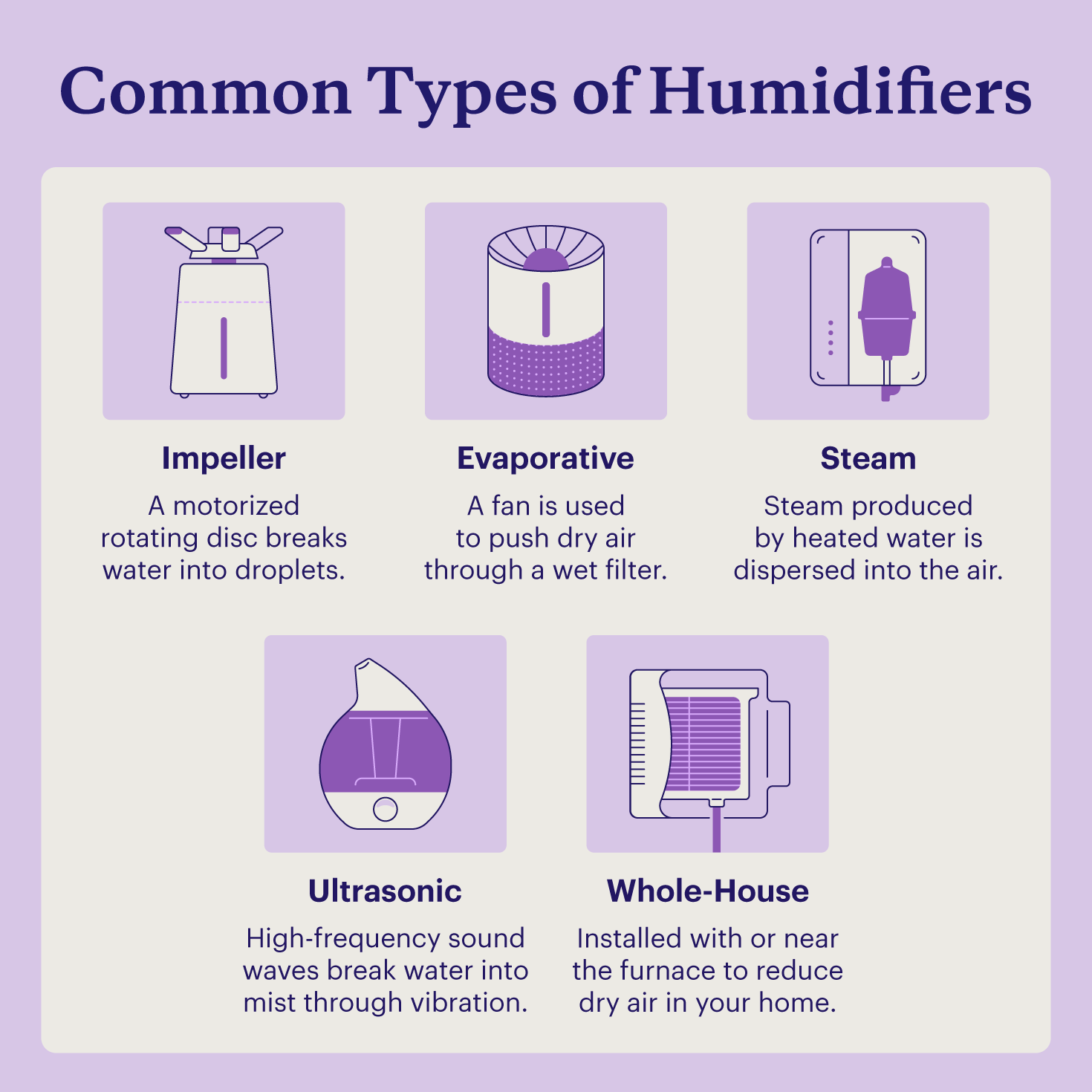
Cool/Warm Mist Models: Special Handling
- Check dishwasher safety in manual—most tanks are top-rack safe
- Manually depress valve buttons during cleaning to prevent clogs
- Never immerse heating elements in warm mist units—wipe only
- Test mist output post-cleaning to verify unclogged nozzles
Evaporative Wick Systems: Filter-Specific Protocol
Filter drying is non-negotiable:
– Remove filter after every use
– Air-dry vertically for 24 hours
– Never store damp filters—mold grows in 6 hours
Filter replacement rules:
– Replace every 3-6 months (mark calendar)
– Immediately replace if brown stains persist post-cleaning
– Never wash filters—destroys antimicrobial coating
– Store spares in sealed bags with desiccant
Fix Musty Smells and Slime: Troubleshoot Dirty Pore Humidifier
Emergency Deep Clean for Neglected Units
For severe contamination (visible slime/mold):
1. Soak tank in undiluted vinegar for 2 hours
2. Scrub with peroxide-dampened brush
3. Run full disinfection cycle twice
4. Replace filters immediately
When to surrender: If contamination covers >50% of surfaces or penetrates plastic, replace the unit—some damage is irreversible.
Symptom-Solution Cheat Sheet
| Symptom | Likely Cause | Fix |
|---|---|---|
| Musty odor | Biofilm in reservoir | Hydrogen peroxide soak + triple rinse |
| White dust | Mineral deposits | Distilled water + weekly vinegar clean |
| Reduced mist | Clogged valves | Manual valve release + peroxide flush |
| Slimy film | Bacterial growth | Immediate deep disinfection |
Set and Forget: Your Pore Humidifier Cleaning Calendar
EPA Minimum Maintenance Schedule
- Daily: Empty, shake, air-dry
- Every 3 days: Quick vinegar wipe-down
- Weekly: Full 15-minute clean
- Monthly: Deep disinfection
High-risk households (asthma/allergies) must clean every 48 hours—bacteria multiply exponentially in moist environments.
Calendar Integration Hacks
- Label phone reminders: “Pore Humidifier Clean – NOW”
- Use fridge magnet calendar with color-coded stickers
- Pair cleaning with existing habits (e.g., “after Sunday laundry”)
- Track filter replacements with permanent marker on packaging
Critical Safety Steps Before Cleaning Any Pore Humidifier
Mandatory Pre-Clean Checklist
- Unplugged 10+ minutes (prevents electrical shock)
- Work in ventilated area (open window for chemical fumes)
- Wear gloves (protects from concentrated solutions)
- Verify no moisture near base (prevents motor damage)
Never skip drying: Reassembling damp components causes electrical shorts. Wait until plastic feels room-temperature to the touch.
Prevent 90% of Problems: Long-Term Pore Humidifier Care
Non-Negotiable Daily Habits
- Distilled water only—no exceptions
- Empty within 30 minutes of shutdown
- Sun-dry components—UV light kills residual bacteria
- Weekly vinegar swish—even if no visible buildup
Proactive Replacement Tracking
- Mark filter replacement dates on unit with waterproof label
- Keep spare Protec cleaner in cleaning kit
- Photograph manual pages for quick reference
- Set 6-month filter reminders before visible wear
Your pore humidifier should deliver pure, healthy moisture—not a mist of contaminants. By implementing this 15-minute weekly routine, you eliminate respiratory risks while doubling your unit’s lifespan. Start today: empty that tank, grab your vinegar, and restore safe operation in under 20 minutes. Your lungs deserve clean air—not a bacterial breeding ground.
Immediate next step: Set a phone alarm for your first weekly cleaning right now—before this page loads completely. Consistent action beats perfect planning every time.

